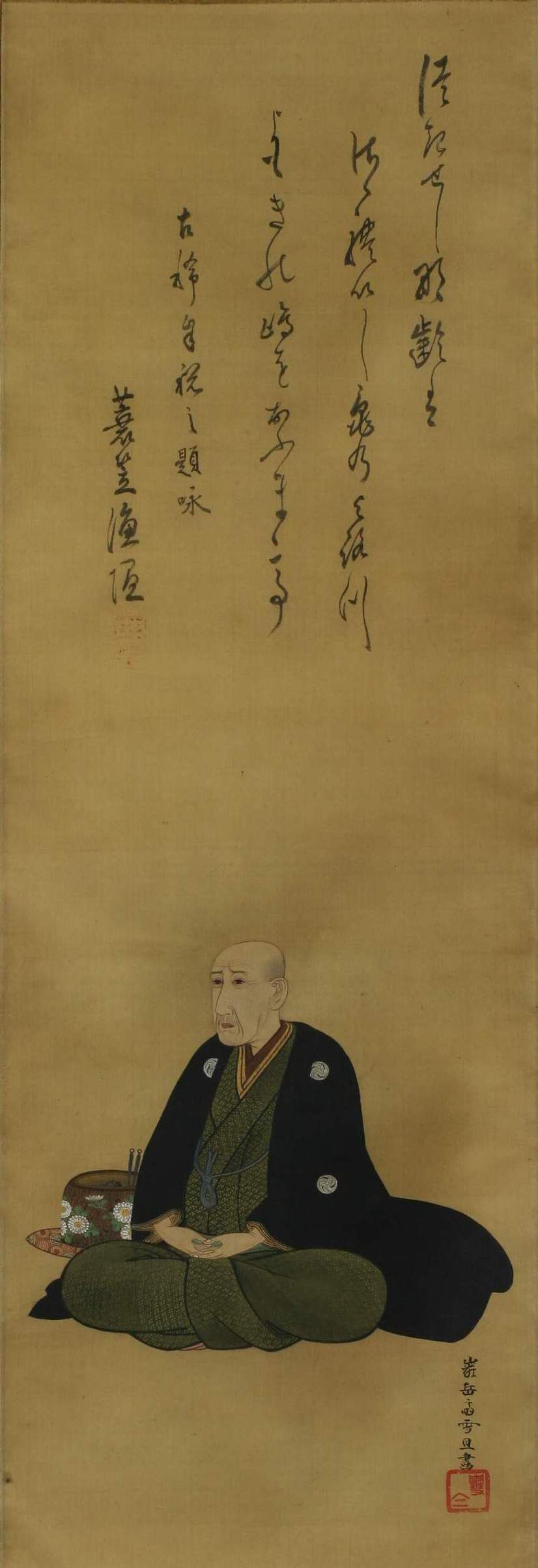Exhibition
Kyokutei Bakin and other writers in the later Edo period-in commemoration of the release of the Kotenseki Sogo Database-
 Bakin's portrait |
Exhibits
|
Kyokutei Bakin and other writers in the later Edo period
Kyokutei Bakin, authour of the well-known "Nanso Satomi hakkenden," was the first Japanese writer who made a living by his pen.Albeit one of the most popular "best-seller writers" as called today, he didn't live a gay life, because the writers in the Edo era had unimaginably low social positions.
Bakin struggled to write various works, to finally find his way in the genre "yomihon", whose typical examples are the very "Hakkenden" and "Chinsetsu yumiharizuki", written by Bakin himself. On the other hand, he passed his hard youth in the epoch when the Edo literature, symbolized by "Tenmei no kyoka," came into bloom. His rivals' fame remains mentioned even today as well: Santo Kyoden for "kibyoshi" and "sharebon", Jippensha Ikku and Sikitei Sanba for "kokkeibon", Tamenaga Shunsui for "ninjobon", Ryutei Tanehiko for "gokan" and so on.
Waseda University Library's "Kyokutei sosho" collection was acquired, thanks to the effort of Tubouchi Shoyo and Ichijima Shunjo, who got the materials through Aeba Koson. Aeba, on his part, had gotten them from the bereaved family of Bakin in the Meiji era. The collection really is a treasure house, including valuable primary materials such as the manuscripts of "Hakkenden," Bakin's diary and so on.
In the academic year 2006, Waseda University Library completed digitizing its special materials of classical Japanese literature and adding them to the Kotenseki Sogo Database to make them available to the general public, along with their bibliographical data. You will be able to face the atmosphere of the cultural blossoms in the later Edo through your nearby internet PC. And you might discover something more than what you can see on type-printing materials.
Copyright and other notices
for this page
Copyright © Waseda University Library, 1996-. All Rights Reserved.
First drafted January 17, 2007
Last revised February 7, 2007
Copyright © Waseda University Library, 1996-. All Rights Reserved.
First drafted January 17, 2007
Last revised February 7, 2007



